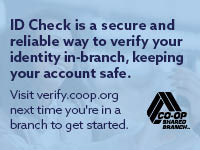With summer vacation just around the corner just keep in mind – you don’t have to spend a lot of money to have a good time.
Here are tips for keeping costs down on vacation:
- Fly during the week. Airline rates are generally more expensive over the weekend, so plan your trip from Wednesday to Wednesday (for instance) to locate cheaper fares.
- Stay close to home. Distant destinations may call to you, but often you can find worthy locations to visit closer to home—national parks, lively cities, and other good places to explore.
- Pack your own snacks for the road. Airline food and gas station snacks can be expensive and often unhealthy. Get into the habit of packing some sandwiches and snacks. Bring along a few bottles of water, and resist the impulse to buy an overpriced soda.
- Do your research. Before making any reservations, compare prices widely. Check out fees that may not be obvious, like airline fees for checking bags. Look on the Internet for deals and coupons, and don’t be afraid to try negotiating for a better rate.
- Bring your own cocktails. If you plan to have a drink or two, find a nearby grocery or party store and buy your own ingredients instead of paying for drinks at the hotel bar or local tavern.
- Plan some down time. An itinerary keeps you organized, but don’t pack your trip so full of stops that you end up too rushed and exhausted to enjoy the experience. Give yourself and your family an afternoon off now and then to lie around the pool or go to a movie.


 1. Start saving, keep saving, and stick to your goals
1. Start saving, keep saving, and stick to your goals

